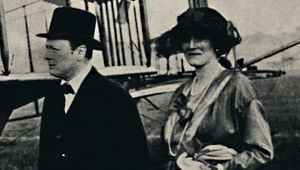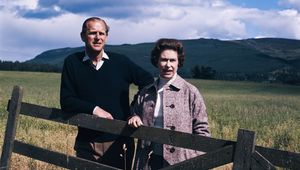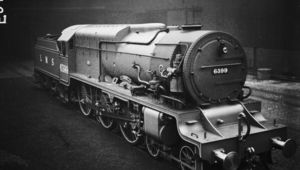
THE THUNDER OF CHARGING CAVALRY AND THE ROAR OF ARTILLERY ARE GONE, BUT FROM THE NOW-PEACEFUL RIDGE WHERE KING CHARLES I ONCE STOOD, A LITTLE IMAGINATION CAN CARRY YOU ALL THE WAY BACK TO THE STORMY DAYS OF THE ENGLISH CIVIL WAR
If hilltops could tell tales, what stories would be told in the area of Edgehill? The countryside stands quiet today. The only sounds come from isolated juggernauts struggling along the B4100 road to Banbury or the rustle of leaves in summer breezes. In essence, however, the area around Edgehill has changed very little.
Some of the land has naturally been put to different uses over the years; it would be most unusual if that were not so. The army now perpetually occupies the land once fought over by the combatants of the 17th century. It is as if, having contested this spot so fiercely, the soldiers are now unwilling to leave. In the centre of the battlefield, large white boards prescribe the limits of access to the average walker. Land that appears to be simply grazing pasture is not open for the casual walker without prior permission.
The site of the battle lies between the small community of Kineton to the North and the hamlet of Radway to the south. During one of my visits, on 23rd October, 1991, Kineton was fighting another kind of battle. Trucks and digging machines bent on upgrading the local roads and pathways laid siege to the town. Kineton appeared to struggle against the advances of 20th century man in much the same way that some 350 years earlier it had struggled to fight off Prince Rupert and his Royalist cavalry. It was heavily overwhelmed on both occasions.
Radway basks in the apparent safety of Edgehill, clinging to the base of the steeply rising ridge of jurassic sandstone. The original church is gone, to be replaced by a larger, rather stark building that contains a wonderful memorial tablet at the base of its bell tower. The tablet commemorates Captain Henry Kingsmill, who died during the early stages of the fighting. He was one of the 3,000 men killed during the day. This Church of St Peter, built in 1866, has an uncomplicated beauty, its exterior devoid of any obvious elaboration. The style, no doubt, would have pleased Oliver Cromwell, warts and all.
The village contains plenty of old buildings that encourage your mind to wander backwards in time and imagine the scene as it may have been long ago. There is, if you can find it, a monument to the battle. An unassuming stone pillar, less than six feet tall, stands at the side of the B4100. Around it, on each anniversary, visitors place a handful of floral tributes, each with a thought-provoking message. Most are from people descended from a soldier who fought in the battle, or from present-day soldiers whose regiments have a place in this history. On my first visit I noticed a wreath left by a man convinced that he had fought in the battle during a previous life, and had lost valued friends.
For people with no local knowledge of the battle site, this memorial is the only sign that the event took place. Battleton Holt, a small woodland at the very centre of the battlefield, can only be entered with the permission of the army. Around the edges of the battlefield, life continues: sheep graze on the farm land, barbed-wire encircles whatever it is that the army keenly protects, and the breezes stir the arms of chestnut and hawthorn trees that grow in profusion in the locality. A cottage being re-thatched provided me with an especially strong sense of this classic rural setting's continuity with the past.
The landscape between Radway and Kineton is remarkable uniform. Although the level plain, known locally as the Vale of the Red Horse, stretches out on either side of the battle area, a strange, slightly claustrophobic sensation drifts over the lone walker. I found this paradox quite inexplicable, but the sensation was unmistakable.
In such an atmosphere it is not difficult to picture 15,000 Royalists gathered on the hill to the south of Radway, and facing them, (350 feet lower) an estimated 15,000 Parliamentarians. A total of 30,000 men, each with their own thoughts, their own fears and their own loved ones. That number is equivalent to the entire male population of Gloucester today!
It's easy to wonder what sort of men they must have been. Not many were local, some had marched many miles to fight for what they believed to be right. In this 'war without an enemy' some counties, indeed some families, found themselves split and therefore on opposing sides.
Men took to arms for all manner of motives, passion weighed as heavily as logic and law. As the days passed, however, the religious motive rose to the fore. The country divided into Presbyterian or Catholic beliefs. The majority of professional soldiers fought for the Presbyterian cause and this superiority finally won the war for the Parliamentarians. It did not manifest itself at Edgehill, however.
As the two armies faced each other, the infantry brigades formed up into two lines, each six men deep. Pikemen stood in the centre of each brigade and some musketeers lined both flanks. The cavalry regiments waited to the right and left of the infantry men. Behind all this stood the artillery.
The scene must have been both fascinating and stomach-churning all in one. Surely some of these men must have sensed the same claustrophobic atmosphere I still noticed 350 years later. The feet of so many men must have churned the land into a sea of mud, the deep browns of the soil replacing the green pastures. In little encampments men would have tried to make life a little more comfortable.
Visitors walking the site today will find no evidence of all this human suffering. The scars in the land healed many years ago. It is unlikely that a single tree that bore witness to the events that started shortly after noon on that fateful day survives to shade modern pilgrims to this historic site.
The Royalist army started the day on slightly higher ground, moved forward on to the more level land in order to bring their large guns to bear upon the opposition. From the ridge top, King Charles could observe the proceedings in relative safety. The view from this woody ridge today, from a seat beside a local hostelry, is quite breath taking. To the north and west the battlefield remains as visible today as it was in 1642. Perhaps the fields have altered shape, and their hedgerows have become easier to define thanks to modern farm machinery, but the atmosphere almost oozes history.
In the imagination, the distant metallic tinkle of farm machines easily transforms into the sounds of battle. The occasional air-force jet flies overhead with the same earth-shattering effect that artillery pieces would have created. The army is still lodged in the area, but today it hides behind trees and earth banks, as if ashamed of its own existence.
The morning following the battle, two exhausted and hungry armies camped within sight of each other. Both claimed victory, but neither had the strength or spirit to take the battle into a second day.
Today's walker detects little to indicate that this battlefield was the site of an important event in English history, and in the history of democratic government. Perhaps though, that is how it should be. Edgehill remains a quiet, peaceful and unobtrusive memorial to the 3,000 men who died in one historic day. For me, the pages of history come to life there.





Comments